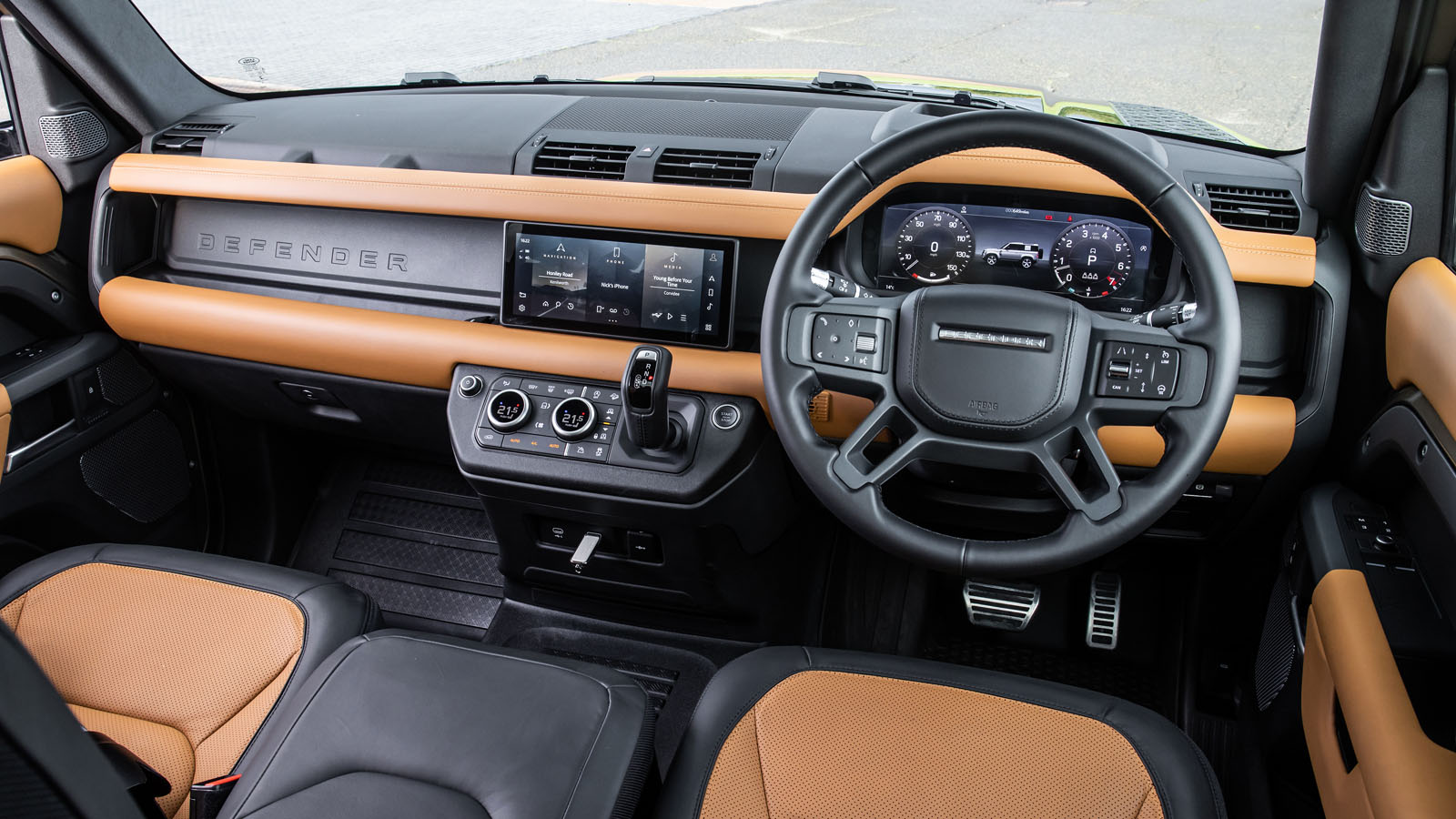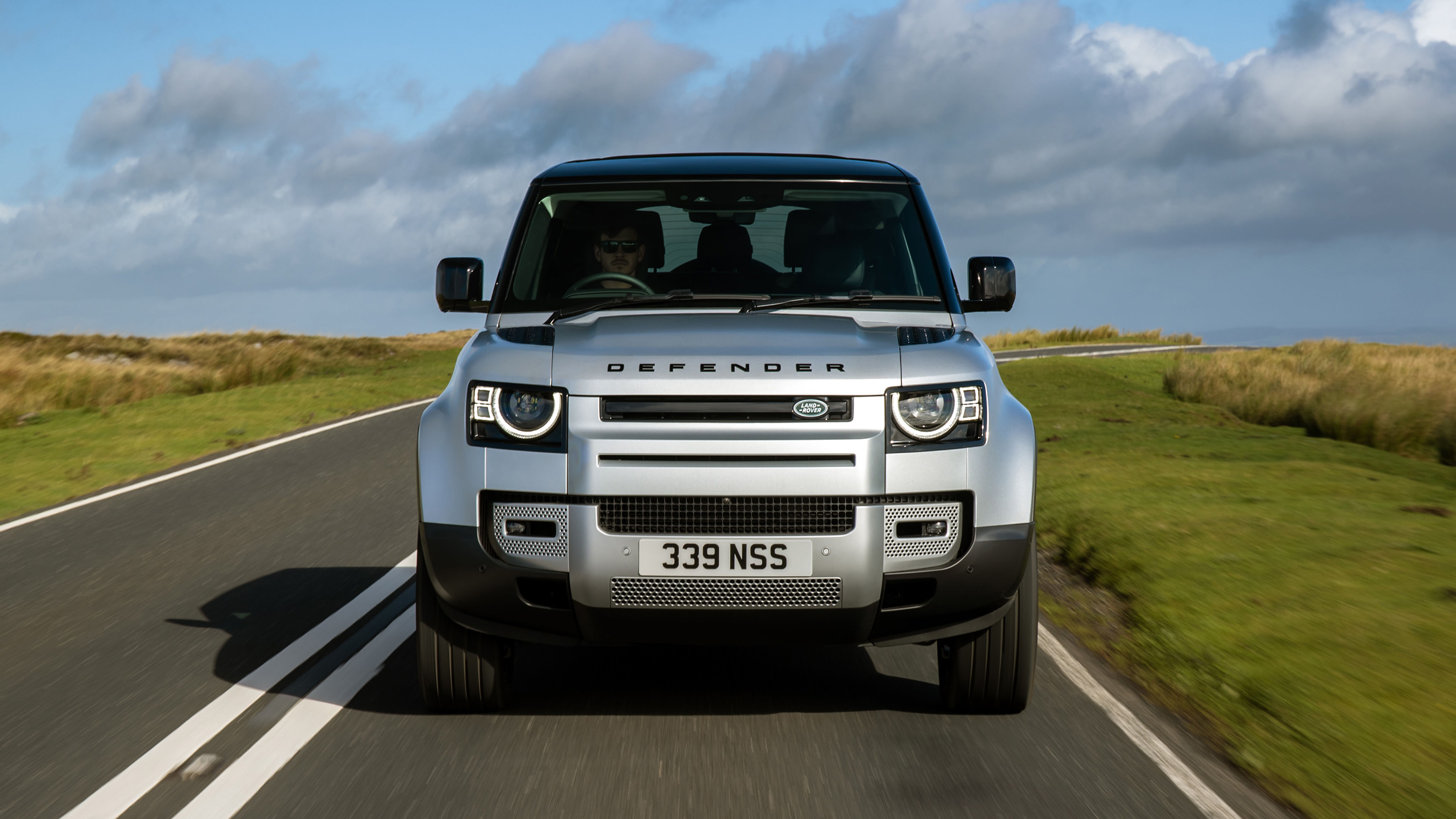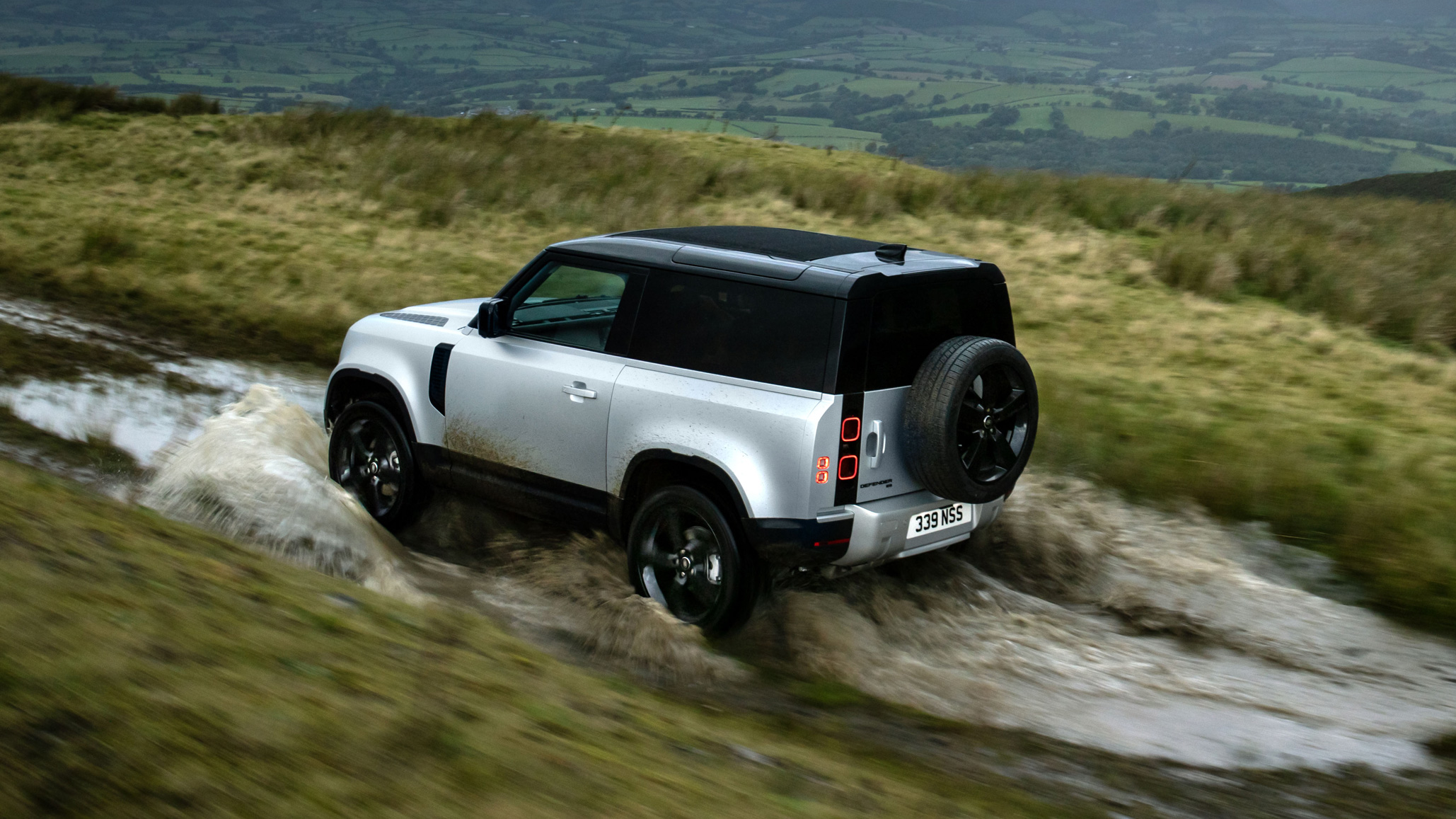
Buying
What should I be paying?
The Defender 90’s not a cheap car these days. The kick-off price for the five-seater used to be around £45k. Now it’s £57,540, which gets you the entry-level petrol in the most basic SE trim.
For that you get 20-inch wheels, a Meridian sound system, 12-way adjustable, heated front seats, a heated windscreen, automatic LED headlights, puddle lights, rain sensing wipers, two-zone climate control, rubber flooring and various driver assistance systems like blind spot monitoring and a 360-degree parking aid.
Land Rover’s Pivi Pro infotainment system is standard, as is Apple CarPlay and Android Auto.
Then there’s HSE spec, which opens up the option of the entry-level diesel. Both can be had in an X-Dynamic variation that adds about £3k of cosmetic enhancements.
Then you’ve got the XS Edition at £68,745 - the cheapest route into the P400 petrol - and X trim, which gives you the choice of the top-end petrol or diesel and various interior upgrades. Think tan leather, fancier alloys and more tech.
Finally there’s a V8 trim that stands alone and its sole purpose is to sell you the supercharged 5.0-litre V8 with more bells and whistles than you could possibly hope to use. Not satisfied with the sticker price of £108,885? Try the V8 Carpathian Edition for £114,345.
We’ve also had a go in the 75th Anniversary Edition (that green thing in the gallery above), which bequeathed the Defender all-terrain tyres, silver bumpers, various ‘75’ graphics and a tonne of otherwise-optional packs thrown in. Pushing £90k is probably a bit steep, and those green alloys are... a bit much.
Our advice? Keep it humble with one of the cheap variants and shun the Chelsea-spec interiors. The Defender is at its best as a workhorse rather than a show pony.
Buying on finance? Residuals are strong but it’ll cost you, as loans aren’t cheap these days. Stick 10 per cent down on the cheapest available Defender on a three-year deal and you’re looking at £755 a month thereafter.
None of them will be cheap to fuel. WLTP consumption is just better than 30mpg for the diesels (about 220g/km CO2) spec-dependent, and you’ll be doing well to achieve that in the real world. The petrols are low-mid 20s mpg and 240-248g/km. Except for the V8, which can’t even break 20mpg on paper and chucks out 321g/km. Not one for the company-car cohort, that.
You get a three-year warranty and the main service intervals are two years.
Featured

Trending this week
- Car Review
BMW 1 Series
- Top Gear's Top 9
Nine dreadful bits of 'homeware' made by carmakers






